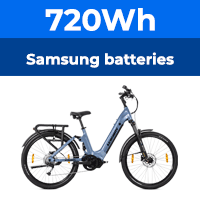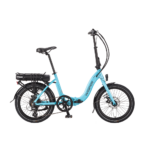Facts & Figures
EU Regulations
EPAC Standard Comes with Electro Magnetic Compatibility Requirements (new)
BRUSSELS, Belgium - The new safety standard EN 15194 for EPACs, Electrically Power Assisted Cycles, was mid November 2008 almost completed. The scope of the standard will be EPACs with a voltage up to 48 DC, a maximum continuous rated power of 250 W and an output, which is progressively reduced and finally cut off as the vehicle reaches a speed of 25 km/h. It is expected that the new standard will come into effect beginning 2009.
The new EN 15194 standard for EPACs is far more complicated than the CEN standards currently in force for conventional bicycles. Contributing to the complexity is the fact that the new standard comes with an annex detailing EMC requirements. These Electro Magnetic Compatibility (EMC) requirements contribute also significantly to the costs of the new safety standards for electric bicycles.
EMC
EMC requirements are already applied throughout Europe to all kinds of electric appliances and vehicles like cars, motorcycles and mopeds. Electro Magnetic Compatibility requirements are designed to, for instance, ensure the safety of people who use a pacemaker or hearing-aid when driving cars or e-Bikes. It’s obvious that electro magnetic pulses from the electronics used in the vehicles they drive must not interfere with their pacemaker or hearing-aid.
But the same goes for the interference from mobile phones and all kinds of other electronic appliances. Once vehicles that use electronics have passed EMC testing they will obtain a CE mark. By the way, the EMC requirements are already in force throughout Europe, including all the e-Bikes (pedelecs) that are currently on the market.
Pedelecs that are to comply with the new EN 15194 EPAC safety standard will have to be tested in the same way as cars, motorcycles or mopeds. That means that complete bikes and/or electronic/electrical subassemblies will have to be tested.
Tests
The fact that complete bikes and/or electronic/electrical subassemblies will have to be tested makes the EPAC standard complete different than the CEN standard for bicycles. Manufacturers can do the CEN testing themselves. That is not possible for EPAC. To meet the EPAC/EMC standard the whole system has to be tested and has to be done again after each minor adjustment.
Final voting
Mid November 2008 the new EPAC standard EN 15194 was in the process of final voting. All CEN members (30 countries) must agree on this standard. If there is a positive vote, the standard will be published as EN standard. Than all CEN-member countries have to publish this standard as a national/EN standard. In Germany as DIN EN 15194.
These publications will give the EPAC standard the ‘presumption of conformity’ with the EU Safety Directive 2001/95/EC that: “Lays down an obligation on producers to place only safe products on the market.”
This Directive also states that: “A product shall be presumed safe as far as the risks and risk categories covered by national standards are concerned when it conforms to voluntary national standards transposing European standards, the references of which have been published by the Commission in the Official Journal of the European Union in accordance with Article 4 of that Directive.”







